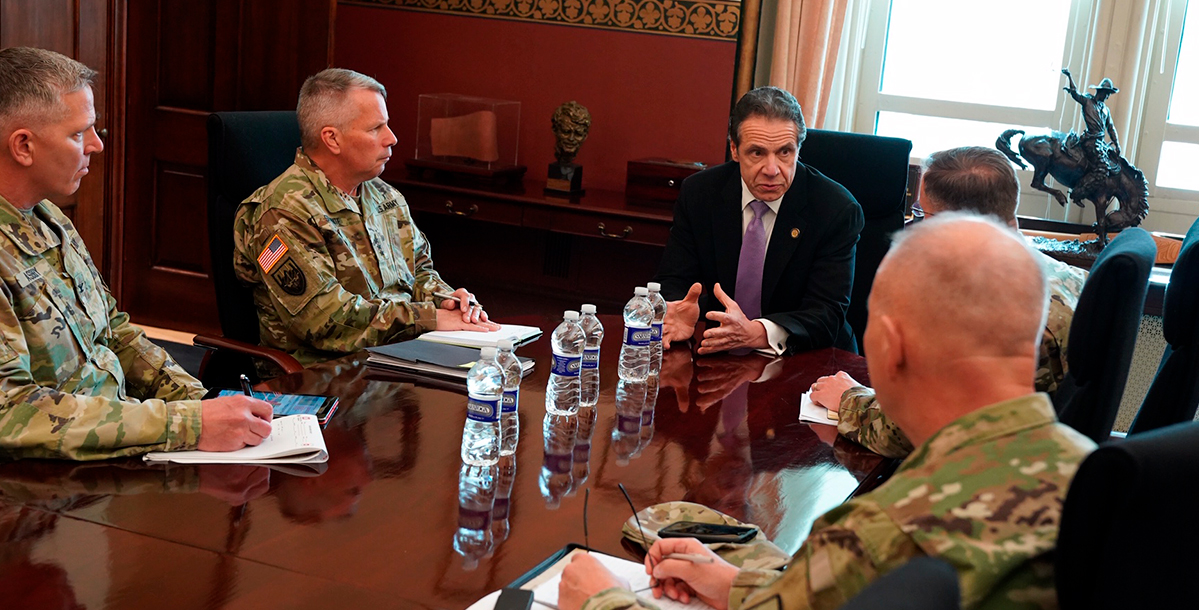In New York, the epicenter of the pandemic in the United States, a charismatic leader has emerged. He was well-known before now, but he has demonstrated a prodigious ability to manage communications during the coronavirus crisis. His name is Governor Andrew Cuomo, and he is 62 years old. A member of the Democratic party and a lawyer by trade, Cuomo has had a long career working in U.S. public administrations, having served in Clinton’s government and as the governor of New York State for more than 10 years.
What are the keys to his success in communicating?
Complex thinking, simple communications
Governor Cuomo is rigorous with his data, but he uses the language of the street. He talks about his mother as part of one of the vulnerable groups, sharing his intimate family conversations and his concerns.
Cuomo even shared how his sister had called him in a panic, wanting a COVID-19 test at a time when there were almost none in New York (in Spain, they could be accused of influence peddling). He told her to be calm, stay at home and not to do anything if she didn’t have more serious complications. He always looks for practical examples and human stories to help him reach people.
Cuomo accompanies his news conferences with PowerPoint presentations sharing clear, direct and very concise messages such as, “Younger people are not that contagious. This is absolutely untrue! And it endangers our most vulnerable people.” His institutional slogan, present on all slides, is “Stay home. Stop the spread. Save Lives.”
Sincerity
Governor Cuomo does not lie. He is up-front about the exponential growth, fact that New York could be the epicenter of the United States and the reality that the hospital system could collapse. He shares the bad news (deaths infections, etc.) without fear. Just last weekend, he got angry with New Yorkers who went out to parks, threatening to take more drastic action if it happened again. But it was more akin to the rebuke of a parent who appreciates and protects you than a Donald Trump-style rebuke toward certain journalists. Cuomo speaks not just to the head, but also the heart. He communicates with soul.


“He calls on people to show solidarity as a basic value of New York society. He is also the first politician talking about what people should be doing at home”
Empathy and spirituality
From day one, Governor Cuomo used rhetorical questions as a communications technique. He has said things like, “Am I afraid during this time? Yes. Do we know how long it will last? No. Of course I don’t have an answer to this. But together, we’ll keep moving forward. We New Yorkers are strong. We’re fighters, and we’ll keep moving forward.” He calls on people to show solidarity as a basic value of New York society.
He is also the first politician talking about what people should be doing at home during the quarantine, suggesting they read, meditate, do physical exercise, etc. He urged people to “Talk to your loved ones, and tell them how much you love them. We will get through this, as we have other difficult situations.” He does not talk about religion or any god, but about community values and principles.
Making headlines
Su larga trayectoria en política y en exposición pública le han preparado para dar mensajes contundentes, de los que los periodistas rápidamente se hacen eco. “La diferencia entre tener suficientes respiradores o no, es la misma diferencia entre la vida y la muerte”. Con esto consigue además de un alto impacto, un gran nivel de recordación.
Social Media
Cuomo’s communications team is agile and effective. Each time they post something, it announces something specific or includes an informative headline: Available aid, restrictions, etc. His social media has become an official channel with 100 percent reliable, up-to-date information.
His principle social platform is Twitter, where he has more than 1 million followers. His content here is very well organized, with clear, well-structured messages targeting society at large. It is his main weapon of choice for communicating, and he has a high level of per-tweet engagement. Here, he calls for more doctors and nurses, or even medical interns, to join the fight, or asks the private sector for help getting more ventilators. Cuomo takes a multidisciplinary approach, acting as both activist and the voice for official decisions.
Surprisingly, his Instagram is much less active. He posts more tweets, but this network is targeting his younger audience. He has addressed them directly several times because of their responsibility in the spread of the disease.

“Governor Cuomo is demonstrating an understanding of the power of good communications in a crisis, and how difficult times can create space for those who care to showcase their leadership to the country’s citizens”
Partnerships with social stakeholders
Governor Cuomo has not hesitated to personally call actors and famous New Yorkers one-by-one to ask them for help in encouraging people to stay at home. Personalities such as Robert De Niro, Danny DeVito, Ben Stiller, Alec Baldwin, Krystal Joy Brown and more have had a tremendous impact. Cuomo has been able to capitalize on their help, and his work with them has conveyed a sense of leadership and influence. It is an American-style campaign in the purest sense, with for a noble cause.
Una imagen vale más que mil palabras
Cuomo knew he had to leave the typical newsroom to take his communications to the next level. He has already had his picture taken with a respirator, and this past Tuesday, he shared an image of himself at the Javits Center, Manhattan’s largest provisional hospital. His surroundings in the photo also communicate and lend credibility to his message. He is conscious of every detail, such as having boxes of masks and medical supplies, delivered to help patients, in the background of his photo at the Javits Center.
Cuomo also made a summary video that looks more like part of a reelection campaign than a crisis management effort, but it shows his deep knowledge of the art of communication. It is a motivational video that shares objective data to spur New York patriotism at the highest level, in pure American style.

Leadership
He speaks like a leader and he offers solutions. He acknowledges limitations, but states what needs to be done. For example, “We need more than 30,000 respirators in 14 days or we’ll have many deaths that we can avoid.” He stands up and takes all questions without hesitation.
Speed and proactivity
His public exposure, at all levels, is constant. It takes him less than a minute to tell President Trump that the lives of New Yorkers come before the economy. Governor Cuomo is demonstrating an understanding of the power of good communications in a crisis, and how difficult times can create space for those who care to showcase their leadership to the country’s citizens.
Body language
Numerous studies have shown that body language and nonverbal communication delivers more than 70 percent of the message. Governor Cuomo communicates calm, strength and security. With his steady gaze and powerful voice, he does not hesitate at any time. His relaxed gestures are well aligned with the messages he seeks to convey, and the touches of humor he includes create a relaxed atmosphere in the newsroom – something helped by how he empathizes with the journalists at every news conference he holds. A master of intonation, he always conveys his mood, whether it be outrage at the lack of resources or coordination from the Trump administration, his paternalistic feeling toward New Yorkers or his disapproval of those who do not stay at home, but instead go out in Central Park.
In a very short period of time, Cuomo has become a key character in the U.S. COVID-19 crisis. He is a good example to follow for both professional communicators and politicians who think they can still learn and improve (if there are any!). The good (and sad) thing is, Cuomo will likely continue giving us lessons for a while. From the communication perspective, however, his actions are worth analyzing. Let’s take a deeper look at what he does – from home. #IStayHome
Authors
Alejandro Romero



